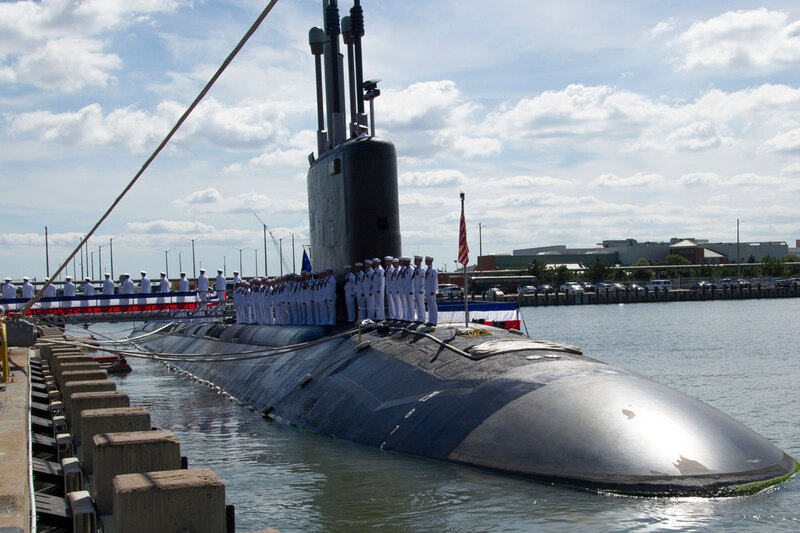Troubles of US attack submarines and what it could mean for Europe?
Nuclear-powered attack submarines (SSNs) from the United States are the backbone of the US strike potential around the world. However, in recent years and months, substantial news about problems with their availability and capabilities have surfaced. These problems could affect their availability in potential wars with both China and Russia.
The US SSNs will play key role in a potential war with China because of their powerful arsenal of Tomahawk cruise missiles, Harpoon anti-ship cruise missiles and torpedoes. This armament could seriously cripple the potential Chinese invasion of Taiwan or other attempts to use the PLA against other regional actors.

The US Navy recently disclosed that 18 of its SSNs are operating in the Pacific Ocean and 7 of them west of the international dateline. According to the commander of the submarine force in the Pacific, Rear Admiral Jeffrey Jablon, the submarine force cannot longer be a silent service and must clearly communicate its capabilities as part of deterrence efforts.
However, according to the latest reports by the Congressional Research Service, there are problems with theavailability and readiness of the US SSN fleet. According to the report, in fiscal year 2023, 37 % of the force was in depot maintenance or idle. Therefore, the number of operational SSNs is only 31 of 49. These problems are linked to the lack of workers and the unavailability of spare parts, as well as with the capacity of shipyards.
Another problem for US shipyards regarding maintenance of the SSN fleet and its availability cloud stems from the AUKUS programme. Due to inadequate capacity, US shipyards and thus the US Navy could face a decreased number of manufactured submariones to saturate three to five submarines intended to be purchased by the Royal Australian Navy (RAN) under the aforementioned AUKUS programme. The purchase by the RAN could cause serious problems for the US submarine force due to the fact that it will not reach the goal of 66 SSNs. Furthermore, shipyards that buildVirginia-class SSNs will be able to deliver two submarines per year from 2028. The current rate is 1.2-1.3 submarinesper year. It is also important to emphasise that the US Navy also needs to procure Columbia-class nuclear powered ballistic missile submarines.
According to Rear Admiral Jonathan Rucker, US Navy could use 3D- printing of some parts to meet maintenance and construction schedule. Rucker told members of the House Armed Services Subcommitte that some 3D printed parts are already being used in maintenance of ballistic missile submarines. It seems that 3D printing (additive manufacturing) is also supported with approximately 15 percent of additional 2 bilion $ scheduler for support of submarine industrial base. Additive manufacturing can also help overcome potential problems with submarinedeliveries under the AUKUS programme.
However, due to potentially increased needs to deploy US SSNs to deterr adversaries, the US Navy could face hard choices in the near to mid-term future. If there are only 49 SSNs in service and 37 % of them (18 SSNs) are not available for deployment, it means that only 31 SSNs are available. Additionally, 18 SSNs out of those 31 submarines are deployed to the Indo-Pacific Command Area of Responsibility (INDOPACOM AOR). This means that only 13 SSNs could be deployed elsewhere (not counting the reserve for those 18 SSNs).
As mentioned above, US SSNs will play a crucial role in the potential war with China. These submarines could also serve as a deterrent against a possible Chinese invasion of Taiwan or other uses of force in the First Island Chain by China. There are concerns about North Korea and its intentions during this decade. It is also unclear whether thecurrent war between Hamas terrorists and Israel will escalate into a regional conflict involving other countries such as Iran and will need additional US forces, including SSNs, to potentially strike high-value targets in Syria, Iraq, or Iran.
Due to maintenance and construction problems and other potential deployments (against China, North Korea, or Iran), the US could be forced to prioritise theatres for SSNs deployment. Due to its prioritisation of China, it is probable that the vast majority of available SSNs will be deployed in the INDOPACOM AOR and thus the number of SSNs potentially deployed to Europe will dramatically decrease.










